A river is flowing due east with a speed 3m/s (Fig. 2 (EP) .31 ).
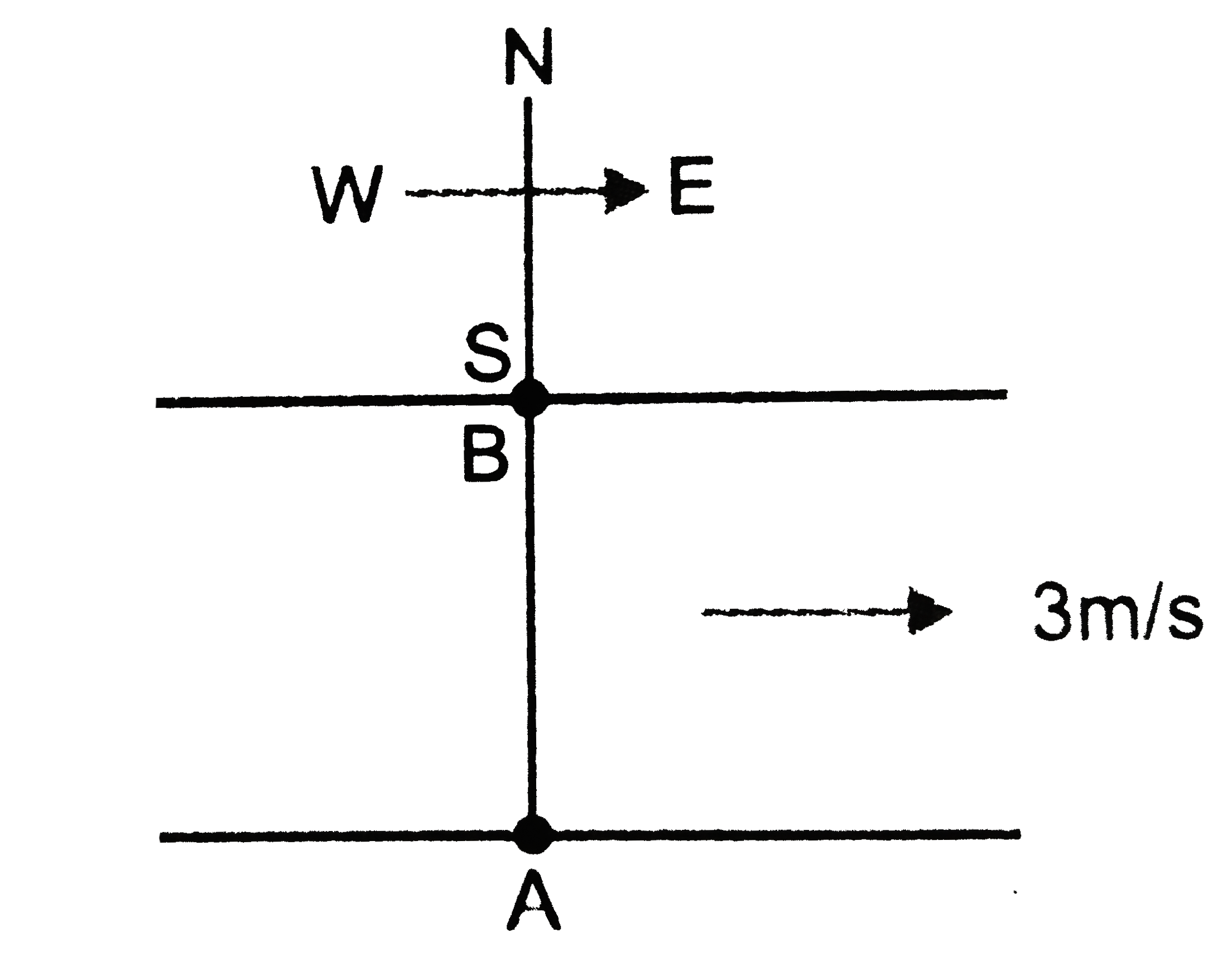 . (a) If swimmer starts swimming due borth, what will be his resultant velocity (magnitude and direction) ? (b) If he wants to start from point (A) on South bank and reach opposite point (B) on North bank,
. (a) If swimmer starts swimming due borth, what will be his resultant velocity (magnitude and direction) ? (b) If he wants to start from point (A) on South bank and reach opposite point (B) on North bank,
(i) Which direction should he swim? (ii) What will be his resultant speed ? (c ) From two differenrent casses as mentioned in (a) and 9b) above, in which casse will he reach opposite bank in shorter time ?
(a) Refer Fig. 2 )EP) 32 (a) , vr=3m/salongAD
Resultant velocity v=√v2r+v2s=√32+42=5m/s
tanθ=vrvs=32=0.75=tan36254'≈tan37∘
θ=37∘ with borth towars the direction of river flow.
 .
.
(b) Refer Fig, 2 (EF) . 32 (b) , the swimmer will go along (AB) if he goes along (AC), so that reaultant of river velocity and swimmer veoocuitymay act along (AB).
Velocityalong(AB),v=√v2s=v2r=√42−32=√7m/s
Let ∠BAC=θ,ehentanθ=(vrv=3√7 or tan−1(3√7)WestofNoth<br>(C)Incase(a),timetaken→cerossthenriver,t_1 = d/ v = d/ (sqrt 7)<br>As d/ 4 lt d/ (sqrt 7) , so t1<t2, therefore the swimmer will cross the river in showrte time in care (a).
Topper's Solved these Questions
- KINEMATICSBook:PRADEEPChapter:KINEMATICSExercise:Advanced Problems
Explore 20 Videos
- KINEMATICSBook:PRADEEPChapter:KINEMATICSExercise:NCRT Exercises
Explore 22 Videos
- KINEMATICSBook:PRADEEPChapter:KINEMATICSExercise:5 Long answer (NCERT)
Explore 4 Videos
- GRAVIATIONBook:PRADEEPChapter:GRAVIATIONExercise:Assertion-Reason Type Questions
Explore 19 Videos
- LAWS OF MOTIONBook:PRADEEPChapter:LAWS OF MOTIONExercise:Assertion- Reason Type Questions
Explore 17 Videos
Similar Questions
A river is flowing from west to east with a speed 5 m s−1. A swimmer can swim in still water at a speed of 10 m s−1 .
If he wants to start from point A on south bank and reach opposite point B on north bank. In what direction direction should he swim ?
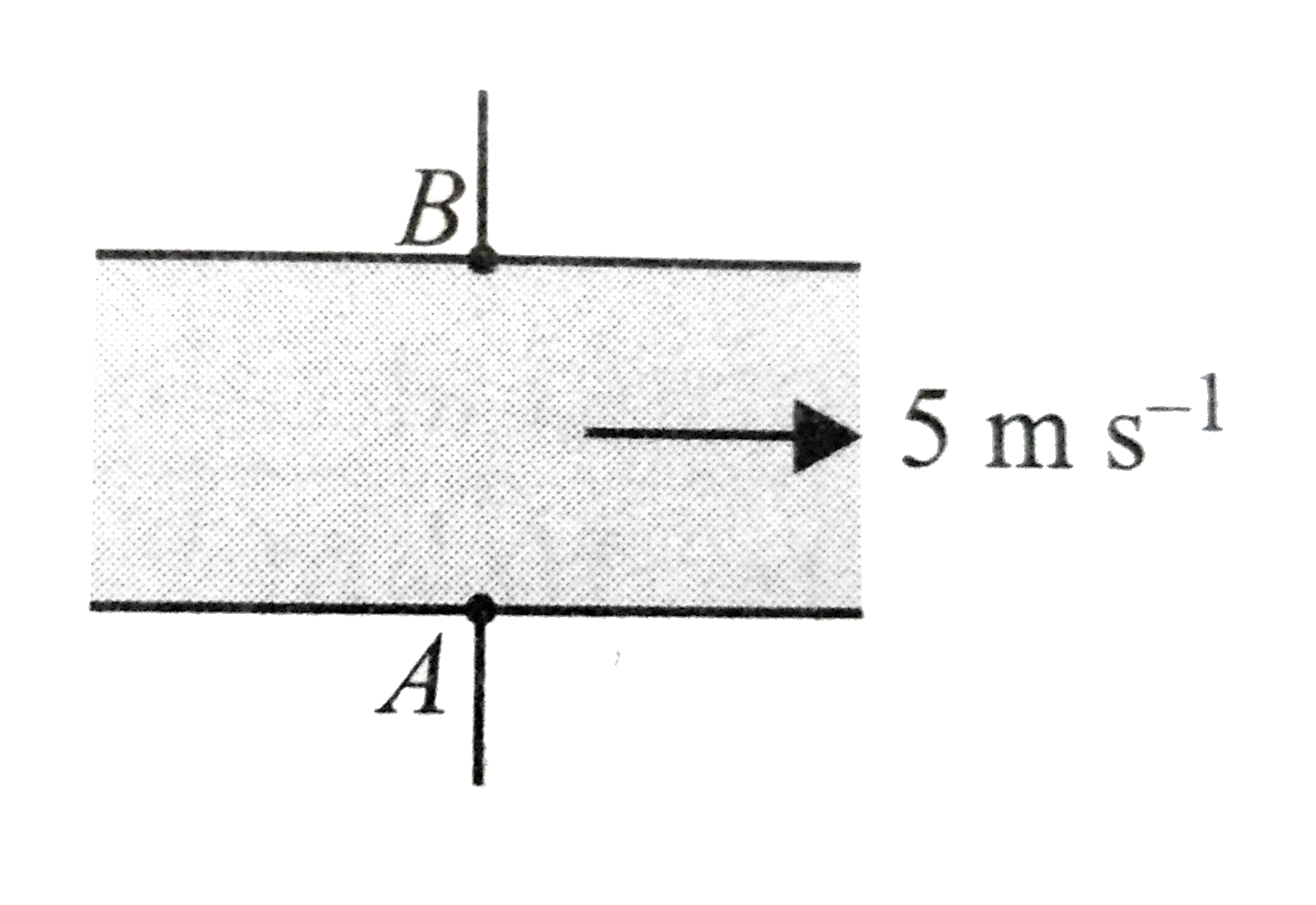
View SolutionAt what angle to the stream should a swimmer swim to reach the opposite bank as soon as possible?
View Solution
Knowledge Check
A river is flowing due east with a speed 3m/s. A wimmer can swim in still water at a speed of 4m/s. If swimmer starts swimming due north, what will be his resultant velocity (magnitude and direction) ?
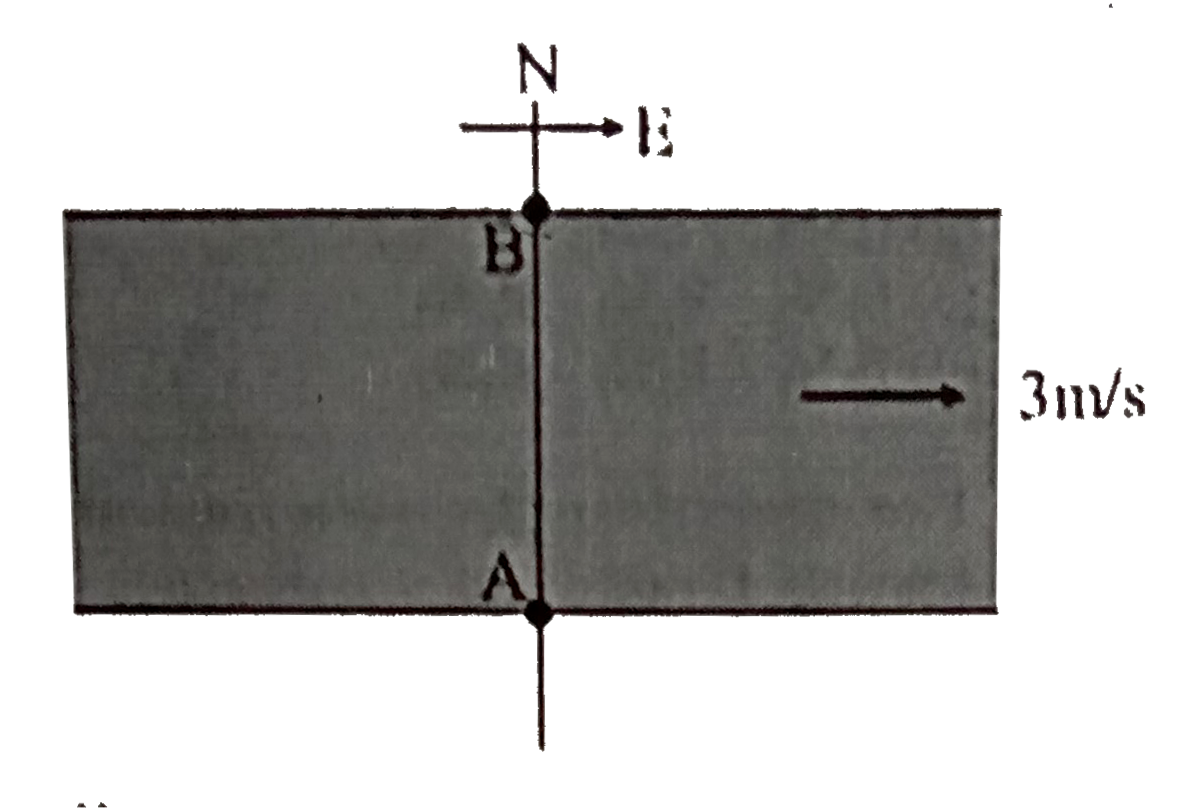 A5m/s at 37∘ to NB5m/s at 53∘ to NC10m/s at 37∘ to NDNone of these
A5m/s at 37∘ to NB5m/s at 53∘ to NC10m/s at 37∘ to NDNone of theseA river is flowing due east with a speed 3ms−1. A swimmer can swim in still water at a speed of 4ms−1. If swimmer starts swimming due north, then the resultant velocity of the swimmer is
A3ms−1B5ms−1C7ms−1D2ms−1Velocity of a boat relative to river current and river current velocity are equal in magnitude. Starting from point A on the southern bank, the boatman wants to reach a point B on the nothern bank in north−east from A. In which direction he has to steer the boat?
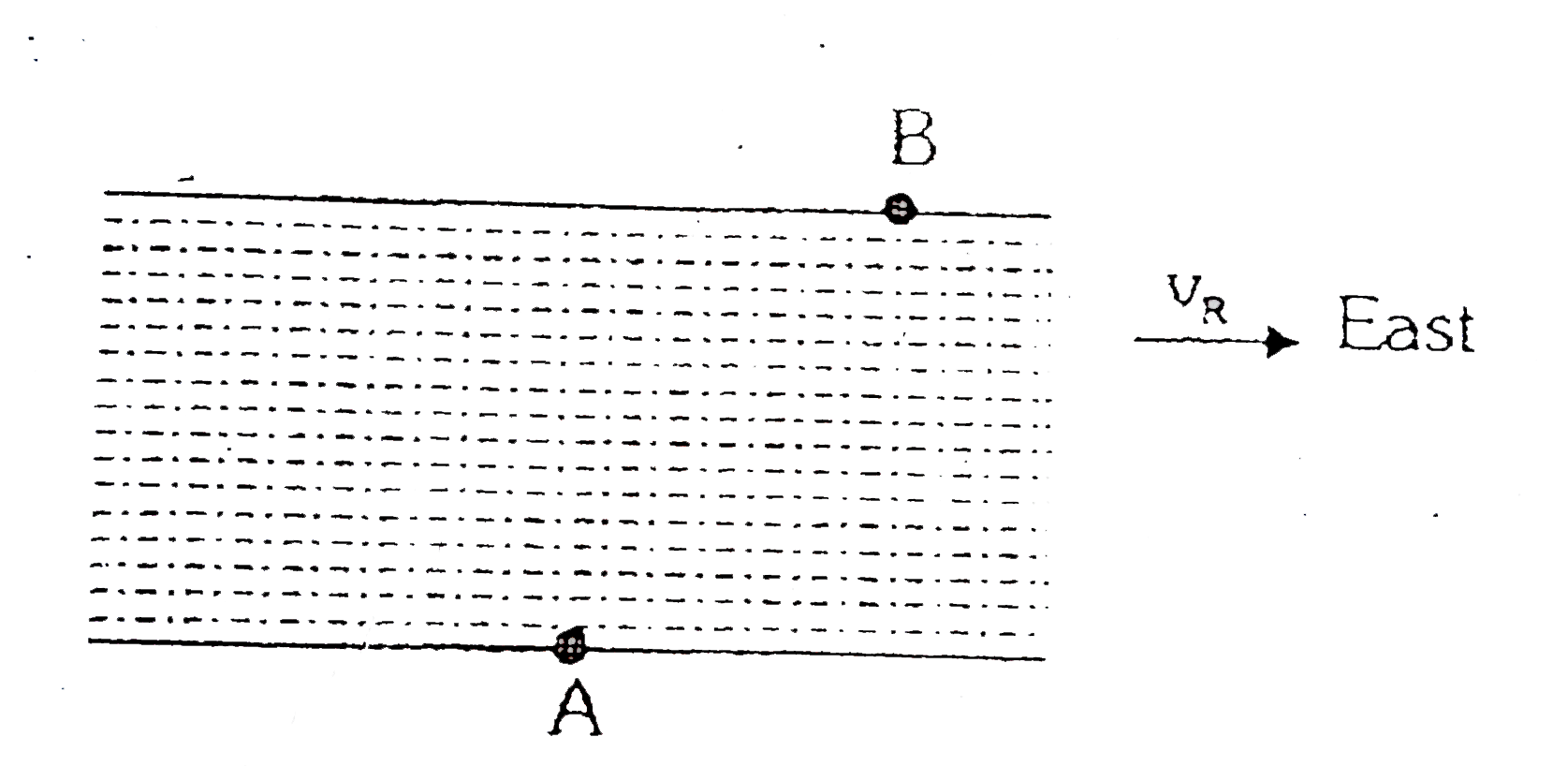 ANorth−westBNorthCNorth−westDNot possible
ANorth−westBNorthCNorth−westDNot possible
A man wants to reach point B on the opposite bank of a river flowing at a speed as shown in figure. What minimum speed relative to water should the man have so that he can reach point B? In which direction should he swim?
View SolutionA boatman wants to reach from one bank of a 2km wide river to a point on another bank , directly opposite to the point from where he started . If he rows with a speed of 8 km/h , in still water and river flows at the rate of 14km/he, in which direction he should row ?
View SolutionA man can swim at the rate of 5kmh−1 in still water. A 1−km wide river flows at the rate of 3kmh−1 The man wishes to swim across the river directly opposite to the starting point.
(a) Along what direction must the man swim ?
(b) What should be his resultant velocity ?
( c) How much time will he take to cross the river ?
View SolutionVelocity of the boat with respect to river is 10m/s. From point A it is steered in the direction shown. Where will it reach on the opposite bank ?
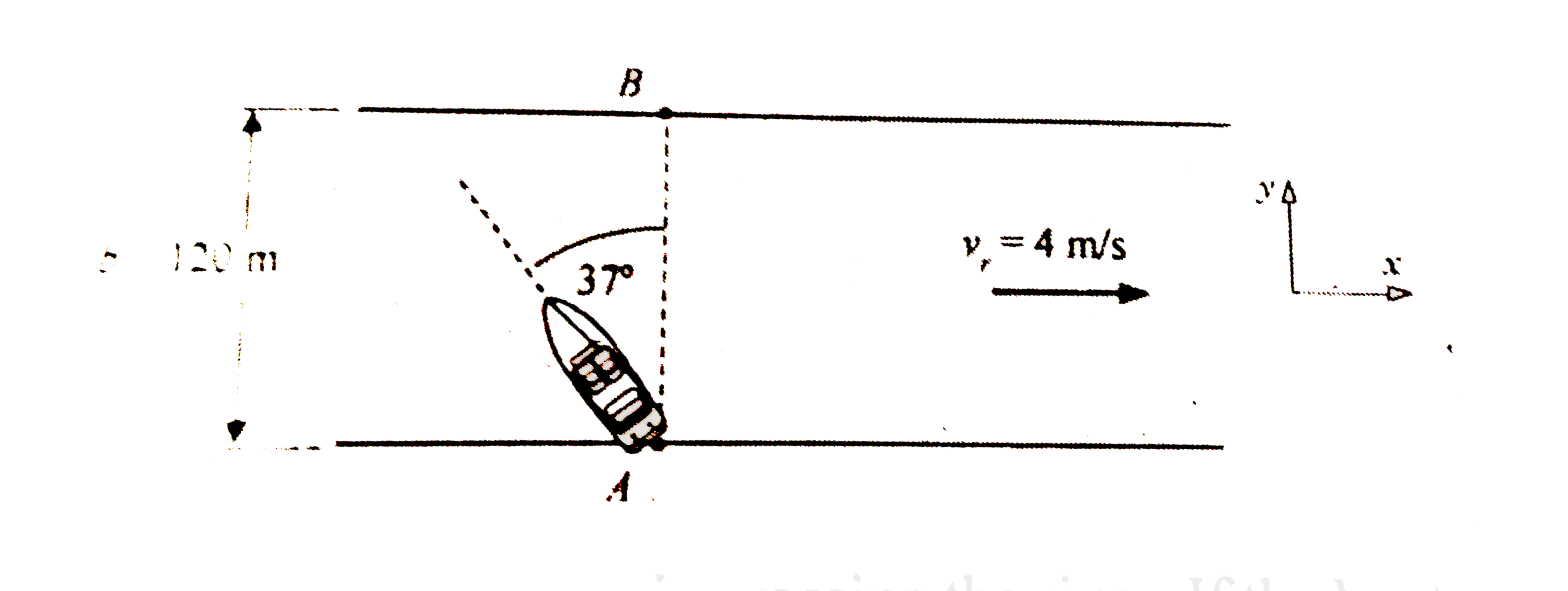
View SolutionA river is flowing from east to west at a speed of 5m/min. A man on south bank of river, capable of swimming 10m/min in still water, wants to swim across the river in shortest time. He should swim
View Solution

